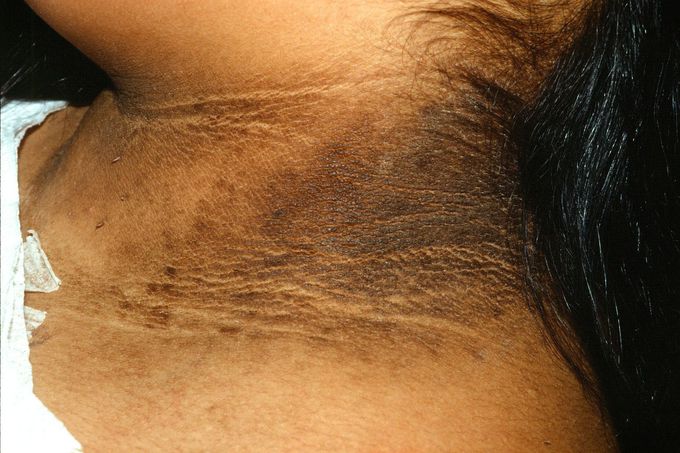


Acanthosis Nigricans: Associated Disorders, Diagnosis and Management
Acanthosis nigricans has vast etiology, ranging from obesity and malignancy to syndromic association and medication induced. It arises from epidermal keratocytes proliferation as well as proliferation of dermal fibroblasts under the influence of various factors such as insulin, insulin-like growth factors (IGF), transforming growth factors (TGF) and tyrosine kinase, among others. Acanthosis nigricans is commonly found on neck, axillae, external genitalia, medial thighs, popliteal and antecubital fossa, face, and knuckles. Palms and soles may also show thickened skin. The most common types of acanthosis nigricans are those associated with obesity, paraneoplastic syndrome, and insulin resistance. Acanthosis nigricans is also associated with rarely occurring syndromes such as Wilson’s disease, phenylketonuria, Prader-Willi syndrome, Familial pineal body hypertrophy, and Hirschowitz syndrome. The diagnosis is made clinically; confirmatory tools are biopsy and histopathology assessment showing hyperkeratosis and papillomatosis. Other similar cutaneous conditions such as fungal infections, psoriasis, and Hailey-Hailey disease, are ruled out by detailed history, examination, and various investigations. Treatment is typically based on management of associated underlying conditions. Weight reduction shows satisfactory resolution of acanthosis nigricans. Topical retinoids, vitamin D analogues and keratolytic drugs benefit the patient. Laser therapies are also proved beneficial in majority of patients. Source Acanthosis nigricans: A review https://onlinelibrary.wiley.com/doi/abs/10.1111/jocd.13544 Image via https://healthjade.net/acanthosis-nigricans/


